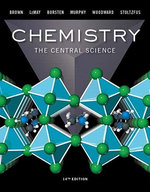A friend tells you that the “neon” in neon signs is a compound of neon and aluminum. Can your friend be correct? Explain.
Chapter 22, Problem 22.3(choose chapter or problem)
A friend tells you that the “neon” in neon signs is a compound of neon and aluminum. Can your friend be correct? Explain.Unfortunately, we don't have that question answered yet. But you can get it answered in just 5 hours by Logging in or Becoming a subscriber.
Becoming a subscriber
Or look for another answer
